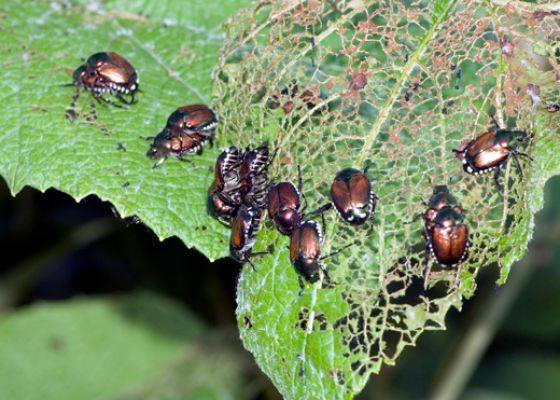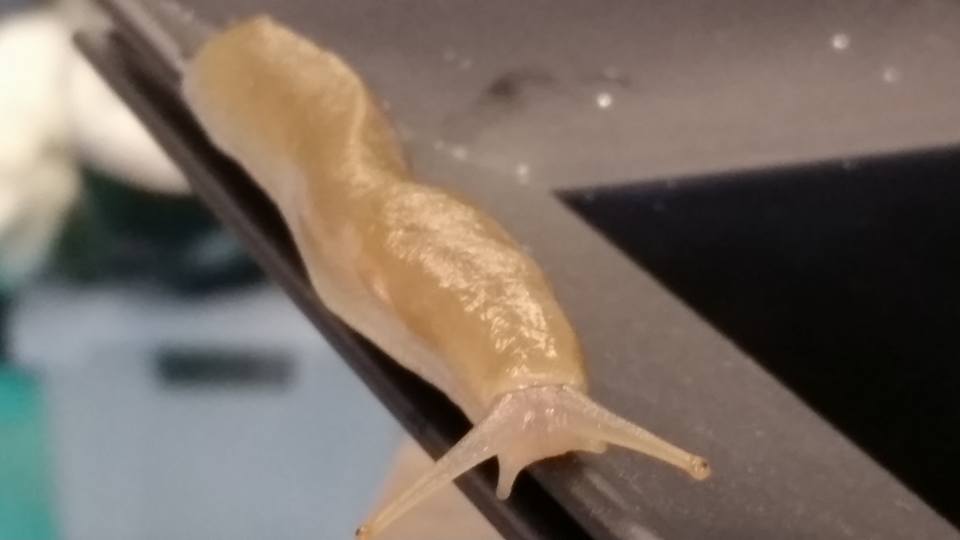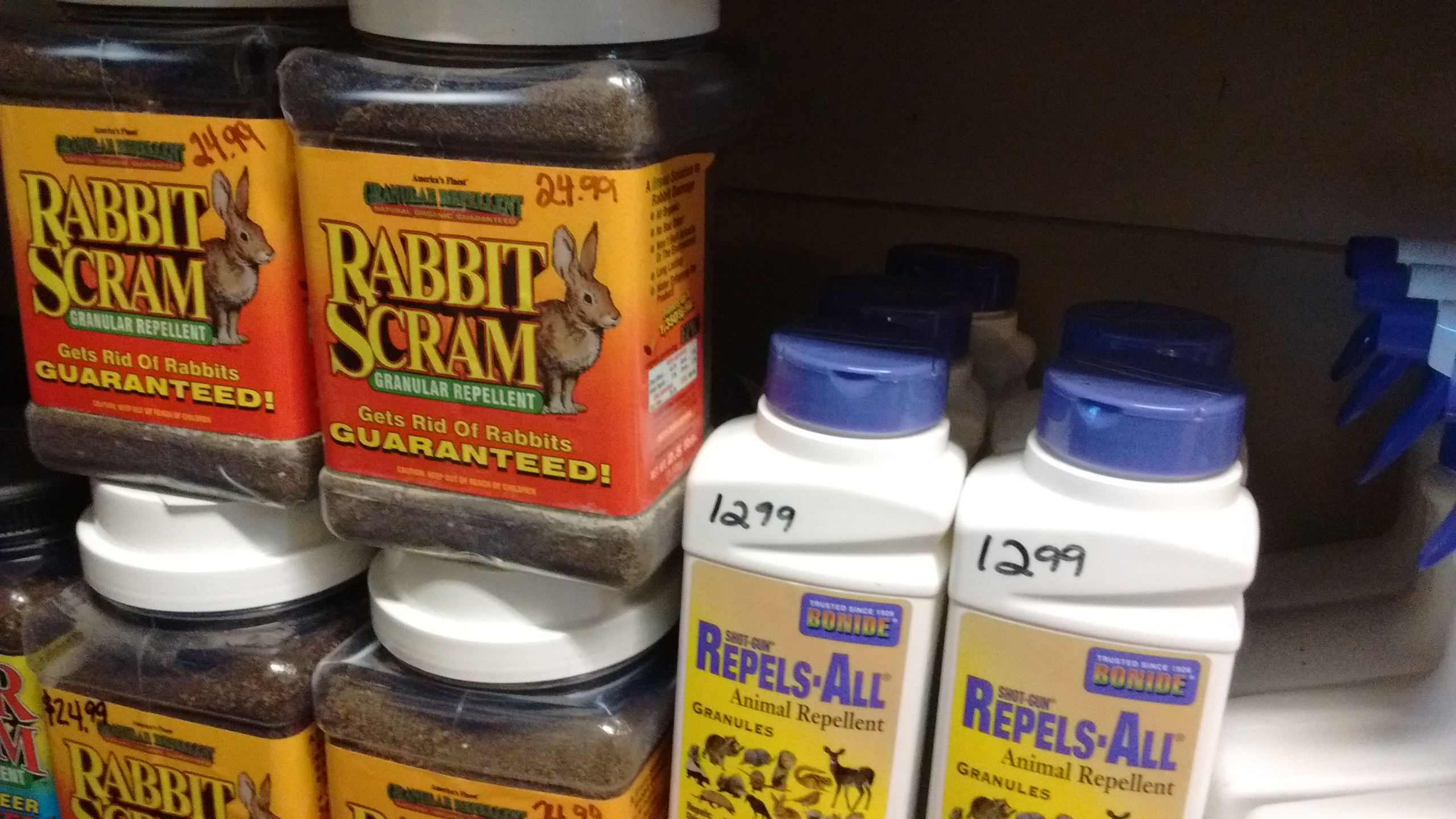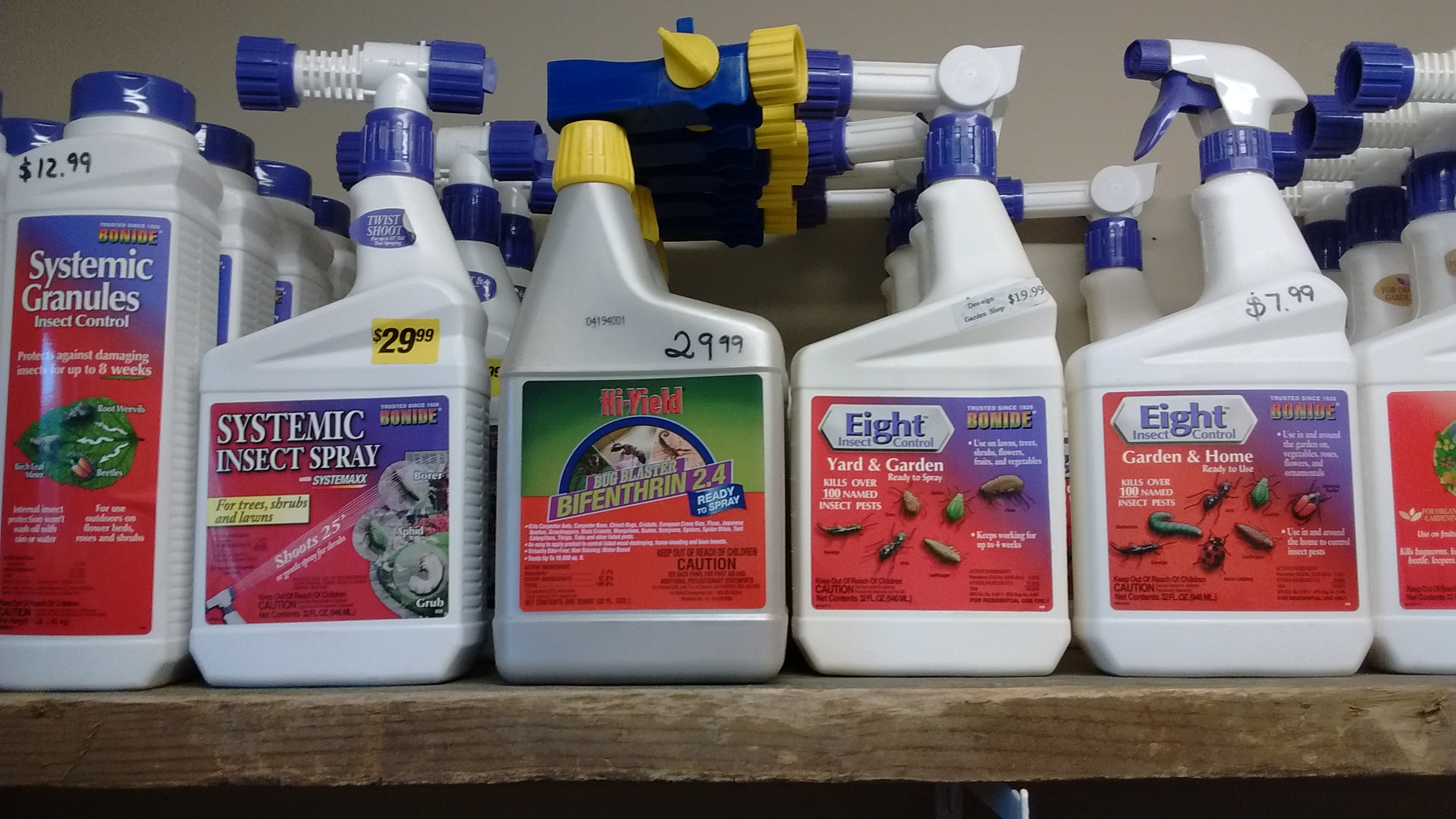When a problem area has gotten so far out of control, you may need more than an organic solution.
Is it a fungicide or an insecticide that you need? Sometimes it helps to have a pro to help you figure it out.
Insecticide & Fungicides
Nothing is more frustrating than discovering mysterious holes in the leaves of your newly planted perennials, or noticing that your 30 year old maple tree has suddenly dropped half of its leaves in the middle of summer. Maybe your beloved blue spruce is turning brown, and upon closer inspection, you find that those weird things dangling from its branches are NOT pinecones, but instead must be something far more sinister. Perhaps you have heard rumors about the terrible Emerald Ash Borer, or the Japanese Beetle, or the Bagworm. What about ceder-apple rust, and blight?
When something goes wrong in your garden, the task of identifying and addressing the cause of the problem can be daunting. We are here to help! You are welcome to bring in leaf samples and photographs of troubled plants, and together we will diagnose and treat the issue.
We practice Integrated Pest Management, which means that we address plant health issues in a variety of ways, with the intent of minimizing negative effects to the surrounding environment (read more about this in the “Organic Plant Care” section of this website). Sometimes, however, this means that pesticides are part of the solution to correcting a problem.
A pesticide aims to control damage caused by a plant pest. This pest could be a slug, a beetle, a rabbit, a fungus. Each pest requires a different approach. We will help you identify the cause of your problem, and then work together to find a solution that works for you. Sometimes, this is as simple as sending you home with a bottle of RabbitScram and directions for how to use it. Other issues might need to be addressed by a professional. We have a Licensed Chemical Applicator on staff who is educated about plant pests and disease, who can visit your property to address plant health issues for you.
When attempting to control an insect problem, it is imperative to be aware of the life cycle of the targeted pest. Some insects do their damage to plants while they are in larval form (caterpillars, bagworms), while others cause damage in both their juvenile and adult forms (Japanese beetle). Often, there is a short window of time where a particular insect is weak and susceptible to pesticide--in order to be most efficient with our use of insecticide, we target the insect during this time of vulnerability.
The Japanese Beetle is an insect that has made itself well known in the Omaha area over the last few years. The beetles appear in late June, and procede to dessicate the leaves, flowers, and fruit of many common landscape plants, including rose, crabapple, birch, linden and hundreds of others. Typically their feast lasts through August, and then tapers off as they prepare for winter. The juvenile form of the Japanese beetle is a grub that lives underground. The grub chews on the grass roots, which causes the turf to turn brown and die.
While the damage to our landscape plants is unsightly and can look quite severe, it is typically only cosmetic. But if looking at those hole-y leaves and chewed up flowers is driving you batty, there are some measures that can be taken to limit the Japanese beetle population in your garden.
The grubs in the ground can be killed before they have a chance to grow up into those menacing beetles we all dispise, however, unless your entire neighborhood has treated their lawns for grubs, chances are very good that adult Japanese beetles will still make their way to your garden.
There are several organic methods for dealing with Japanese beetles. These methods are best used in smaller landscapes, and are ideal because they don’t pose any risk to pollinators or beneficial insects. You can read more about them in our Organic Plant Care Section. For larger landscapes, trees, and extreme infestations, using an insecticide may be your best bet to get rid of Japanese beetles.
There are two types of insecticide used to deal with Japanese beetles--systemic, and contact.
A systemic insecticide is taken up into the leaves of the affected plant, and does its work on the beetles when they eat the leaves. A contact insecticide kills the beetles on contact. For the most complete protection from beetle damage, a combination of the two can be utilized.
Another insect that has been in the headlines lately is the Emerald Ash Borer (EAB). Unlike the Japanese beetle, the EAB only affects ash trees. Unfortunately, ash trees were very popular and widely planted in the past. As the Emerald Ash Borer moves through the Omaha area, we see noticeable gaps in our city and home landscape where beautiful trees once stood.
The Emerald Ash Borer does most of its damage while in its larval stage, which it spends burrowing extensively under the bark of the trees. Once the borer reaches maturity, it tunnels out through the bark, leaving a ‘D’ shaped hole. The damage caused by the Ash borer weakens the tree, leaving it susceptible to disease, which typically leads to the death of the tree.
We do offer a maintenance/preventative treatment for high value ash trees, but the treatment would need to be continued for the lifetime of the tree. In some cases, this is a worthwhile option. In other instances, it makes more sense to plan for the future, and plant a new shade tree of a different species nearby, to eventually take the place of the ash tree.
 Insecticides
Insecticides
You are more than welcome to bring in samples and photos of your problem and we will help you diagnose it, and how to fix it.










